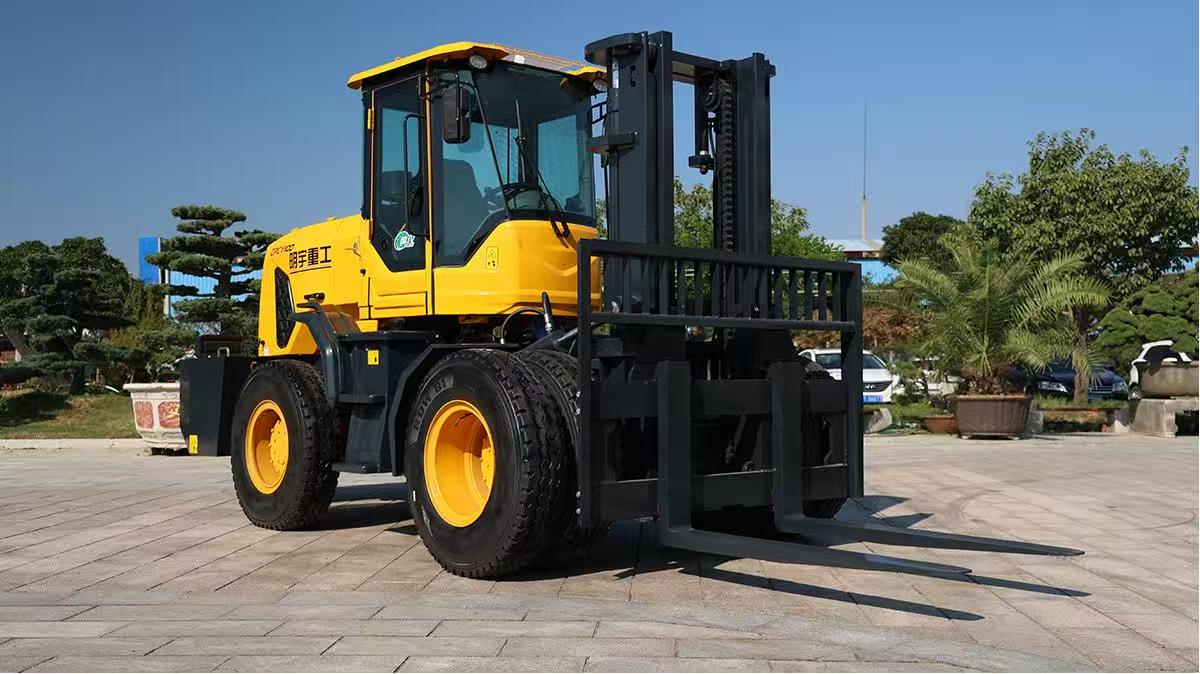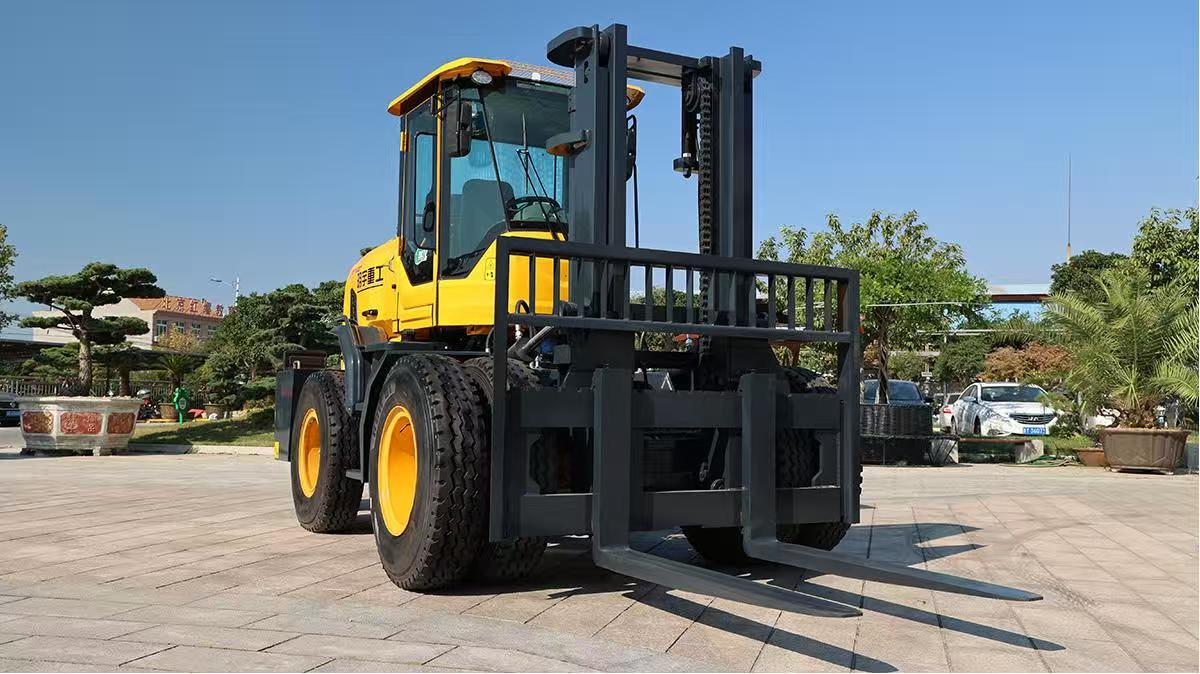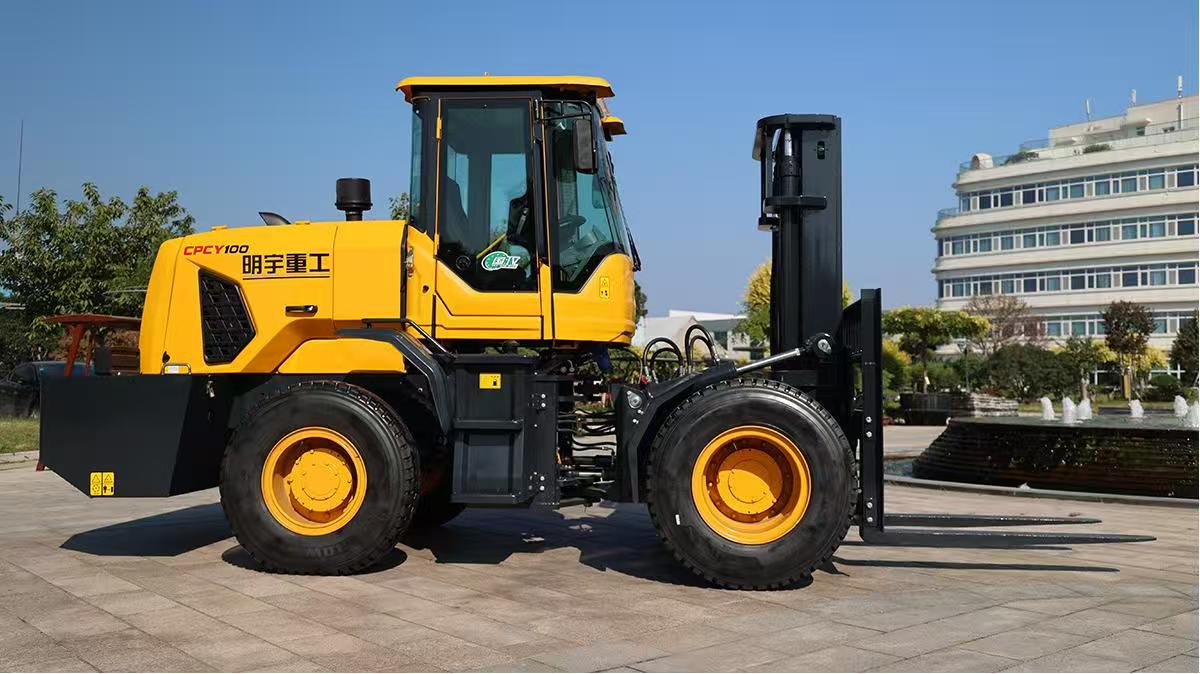What Safety Features Do Rough Terrain Forklifts Have?
Introduction
Rough terrain forklifts (RTFs) are indispensable in construction sites, lumber yards, agricultural fields, and other off-road environments where stability and reliability are crucial. Unlike standard forklifts that operate on smooth warehouse floors, RTFs face the challenges of mud, gravel, slopes, and debris. In these demanding conditions, safety is not just a preference — it is a necessity.
As RTFs carry heavy loads over unstable ground, the risk of tipping, collisions, or mechanical failure increases. This article explores the built-in safety features of rough terrain forklifts that help operators stay protected while ensuring efficient operation. From structural reinforcements to smart technologies, these features are vital to reducing accidents and complying with safety regulations.
Understanding Rough Terrain Forklifts
Rough terrain forklifts are designed specifically for outdoor and uneven surfaces. Their large pneumatic tires, high ground clearance, and four-wheel drive capabilities distinguish them from conventional forklifts. These machines can lift loads across gravel paths, muddy fields, and rocky terrain without compromising balance or traction.
There are two main types:
Vertical mast forklifts: Look similar to warehouse forklifts but are adapted for outdoor use.
Telescopic handlers (telehandlers): Feature extendable booms for lifting loads to greater heights or distances.
Because of the environments in which they operate, rough terrain forklifts must incorporate numerous safety mechanisms to protect both the operator and the surrounding personnel.
Core Safety Features in Rough Terrain Forklifts
3.1. Roll Over Protective Structures (ROPS)
ROPS are steel frameworks mounted over or around the operator's cab to prevent crushing injuries during a rollover. RTFs, especially those operating on sloped or uneven terrain, are vulnerable to tipping. A certified ROPS ensures the cab remains intact in case of an overturn, providing a critical survival zone for the operator.
3.2. Falling Object Protective Structures (FOPS)
In many rough terrain applications, such as construction or logging, falling debris is a serious hazard. FOPS are designed to deflect or absorb the impact of falling objects, protecting the operator from head injuries. FOPS often consist of reinforced mesh or steel plating above the cabin and meet strict international standards.
3.3. Four-Wheel Drive and Large Pneumatic Tires
RTFs are typically equipped with large, deep-tread pneumatic tires that provide traction over soft or rugged ground. Combined with a four-wheel drive system, these features enhance maneuverability and reduce the chance of skidding or losing control — a crucial element of operator safety on hills or loose soil.
3.4. Tilt and Sway Control Systems
To prevent tipping when carrying loads over uneven terrain, many RTFs include electronic tilt control systems. These sensors detect the angle of the chassis and either alert the operator or automatically adjust to maintain balance. Sway control systems help stabilize the load when the forklift is moving or lifting on uneven ground.
3.5. Load Backrest Extensions
To prevent loads from falling backward onto the operator, most forklifts feature a load backrest — a metal guard that supports unstable or stacked loads. On rough terrain models, these backrests are usually reinforced and taller to accommodate large, bulky materials.
3.6. Enhanced Braking Systems
Powerful brakes are essential when navigating sloped or loose terrain. RTFs may use wet disc brakes, hydraulic assist, or multi-disk systems that remain effective even in mud or wet conditions. Most models also include an automatic parking brake that engages when the operator leaves the seat.
3.7. Seat Belts and Operator Presence System (OPS)
Seat belts are fundamental in preventing ejection during a rollover. Modern RTFs often feature an Operator Presence System (OPS) that disables movement or hydraulic functions if the operator is not in the seat, reducing the chance of accidental operation.
Electronic and Visual Safety Technologies
4.1. Load Moment Indicators (LMI)
An LMI is a digital system that monitors the load being lifted against the machine’s rated capacity. If the operator attempts to lift too much or extend the boom too far, the LMI issues a warning and may even halt hydraulic functions to prevent tipping.
4.2. Cameras and Proximity Sensors
RTFs often work in cluttered outdoor environments where visibility is limited. Rear-view cameras and proximity sensors help operators detect obstacles, pedestrians, or hazards they might otherwise miss. Some systems offer full 360-degree views and alert tones for approaching objects.
4.3. Warning Lights, Horns, and Backup Alarms
To ensure others in the vicinity are aware of the forklift’s movements, rough terrain forklifts are equipped with high-intensity flashing beacons, loud horns, and automatic backup alarms. These are especially useful in noisy construction zones where visual cues might be the only form of warning.
Operator Safety Enhancements
5.1. Ergonomic Cabin Design
Operator fatigue can lead to poor decisions and accidents. Many modern RTFs are designed with comfort in mind — padded, adjustable seats; intuitive controls; and shock-dampened cabins reduce strain during long shifts.
5.2. Climate Control and Enclosed Cabins
In dusty, rainy, or extremely cold environments, enclosed and climate-controlled cabs protect the operator and keep them alert. Features like air filtration and defogging systems contribute to better visibility and health safety.
5.3. Easy Access and Egress Points
Getting on and off an RTF can be dangerous, especially on uneven ground. Non-slip steps, wide doors, and strategically placed handholds reduce the risk of slips, trips, and falls.
Maintenance and Safety Interlocks
Maintenance-related accidents are common, so many RTFs are equipped with safety interlocks. These systems disable certain functions during servicing, preventing unintended movement. Some machines feature onboard diagnostics that alert operators of mechanical issues, helping to prevent catastrophic failure.
Pre-use checklists and electronic maintenance logs also contribute to the overall safety profile of the machine by ensuring issues are caught early.
Compliance with Safety Standards and Certifications
Rough terrain forklifts must comply with various safety standards:
OSHA (U.S.): Enforces safety rules for powered industrial trucks, including training requirements.
ANSI/ITSDF B56.6: Covers design and safety standards for rough terrain forklifts.
ISO/CE (Europe & International): Manufacturers must meet global safety and performance benchmarks.
Adhering to these standards ensures that forklifts are built and operated with safety as a primary concern.
Optional & Aftermarket Safety Features
Many additional features can further improve RTF safety:
Telematics systems monitor operator behavior, log safety violations, and help managers enforce best practices.
Geofencing and GPS tracking limit operation to safe areas and prevent unauthorized use.
Fire suppression systems are available for environments with flammable materials.
Hydraulic fork positioners reduce the need for manual adjustment, minimizing injury risk.
These features may not come standard but are valuable investments in high-risk worksites.
Training and Operational Best Practices
Even the safest machine can be dangerous without a skilled operator. All RTF users should undergo certified training that includes both classroom and hands-on instruction. Key areas of focus should include:
Load handling techniques
Navigation on inclines and slopes
Recognizing unsafe conditions
Proper pre-operation inspection procedures
Regular safety drills, toolbox talks, and refresher training help keep safety top of mind for all personnel.
Conclusion
Rough terrain forklifts are built for challenging environments, and their safety features reflect the hazards they face. From structural protections like ROPS and FOPS to advanced systems like LMIs and cameras, these machines are engineered to keep operators and nearby workers safe. But safety is a shared responsibility — combining good design with proper training, inspection, and workplace policies creates the most secure worksite.
By understanding and utilizing the full range of safety features, companies can ensure not only regulatory compliance but also the well-being of their teams and the longevity of their equipment.
Post time:Jul.23.2025



